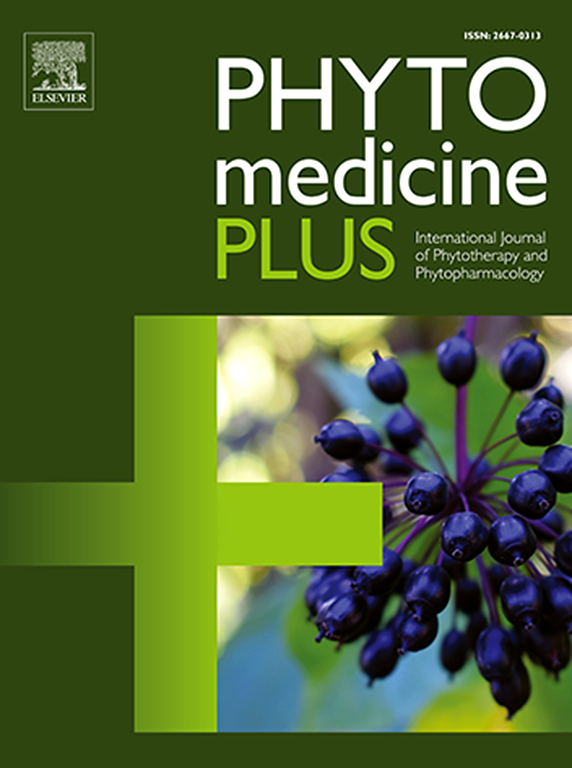Phytochemicals of Callisia fragrans exhibit significant antimicrobial, pro-wound-healing, and anti-inflammatory properties
Q3 Pharmacology, Toxicology and Pharmaceutics
引用次数: 0
Abstract
Background
Callisia fragrans is a known plant in folk medicine but poorly explored from a scientific perspective.
Purpose
The aims of this research were to identify the major phytochemicals of this plant, and to investigate them with regards to antimicrobial, pro-wound healing, and anti-inflammatory properties.
Methods
Liquid chromatography–electrospray ionization-mass spectrometry (LC-ESI-MS), and high-performance liquid chromatography (HPLC) were used for phytochemical analysis; antimicrobial activity studies included estimation of eradication of the drug-resistant microorganisms and biofilm formation; human dermal fibroblasts were applied for research of pro-wound healing (WH) and anti-inflammatory properties. For bioinformatical assessment, we selected the STITCH database found at http://stitch.embl.de/.
Results
Seven phytochemical constituents: quinic acid, chlorogenic acid, 4-O-caffeoylquinic acid, 5-O-caffeoylquinic acid, rosmarinic acid, quercetin 3-O-rutinoside and farrerol were successfully identified. The crude extract and quinic acid, chlorogenic acid, 4-O-caffeoylquinic acid, 5-O-caffeoylquinic acid, rosmarinic acid and farrerol were found to exhibit significant antimicrobial effect against antibiotic-resistant Escherichia coli, Klebsiella pneumoniae, Acinetobacter baumannii, Serratia marcescens and S. enteritidis. The extract and some phytochemicals of C. fragrans inhibited the growth of biofilm-producing bacterium, while the effect of the extract was greater than that of the positive control streptomycin. The extract, chlorogenic acid and rosmarinic acid significantly enhanced wound healing in the scratch assay (p<0.001). Finally, the extract and identified phytoconstituents exhibited significant anti-inflammatory effects mediated by reduced secretion of IL-6 and IL-8 cytokines in human dermal fibroblasts.
Conclusions
This research revealed convincing and promising indications of significant therapeutic potential of C. fragrans extract and its active phytochemicals.
求助全文
约1分钟内获得全文
求助全文
来源期刊

Phytomedicine Plus
Medicine-Complementary and Alternative Medicine
CiteScore
3.70
自引率
0.00%
发文量
178
审稿时长
81 days
期刊介绍:
 求助内容:
求助内容: 应助结果提醒方式:
应助结果提醒方式:


